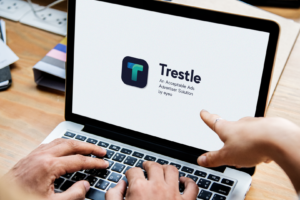The heart and soul of an advertisement is content, from its messaging in language to the images it deploys to its color palette. In fact, it can be easy to forget that there’s anything else to consider once you’re done perfecting the content of an ad.
But that would be a huge mistake. It’s vital to consider not just the content within an advertisement, but ad placement: the content an ad appears next to.
Location, location, location
When GlobalWebIndex (GWI) asked consumers “Which of these would most negatively impact your view of a brand?” 31% responded “ads next to inappropriate content.”
To underline just how detrimental poor ad placement can be to a consumers’ view of a brand: ad placement next to inappropriate content is more than twice as likely to deter consumers as “ads without diversity and inclusivity.”
This is, as GWI points out, an especially interesting finding in 2021. The last year has seen a much-needed reckoning around diversity and representation, with consumers clamoring for brands to show solidarity with and evidence inclusivity of marginalized groups. And brands have generally responded, implementing changes that celebrate our diverse population.
Known by the company you keep
Brands should be aware, however, that this step in the right direction is just that: a step.
“Advertisers should be aware that the context around an ad can be just as damaging as what’s in the creative,” writes GWI Trends Analyst Isaac Hopkins. That’s because consumers understand ads not as isolated points, but parts within a larger whole.
There are a few major reasons that people tend to judge advertisements not just as individual expressions of brand identity, but as part of a larger conversation with the content they appear near and next to.
A major reason that this problem persists, though, is the fact that many consumers think that less-than-ideal ad placement is intentional. According to Adweek, the average layperson assumes poorly placed ads are the product of decision rather than mistake or bad luck. Users are most likely underestimating the power to choose particular ad placement, especially considering how big the internet really is.
“The sheer size of the Internet means there is a small fraction that is premium, a lot that is mediocre, and a small amount that is truly awful, especially for advertisers,” says Matt Borchard, media director at media agency Noble People. “Appearing next to bad or unwanted content has always been a problem, especially as […] more websites emerged.”
What can you do?
The news about consumers’ brand perception being negatively impacted by ad placement should be a wake-up call to advertisers rather than an alarm siren. Ad placement is deeply important—but brand perception can be positively (and, yes, negatively) impacted through other means.
When GWI asked “Which of these would most negatively impact your view of a brand?”, there was one clear frontrunner: volume. More than half of consumers—53%—responded that “Too many ads” would be most detrimental to their opinion of a brand.
This is the most important thing to focus on, states Marketing Dive reporter Peter Adams. “Brand safety has become a hot item for many companies as they look to avoid associations with harmful content, but that’s not as significant a concern for consumers, who show an aversion to ad overload in larger numbers.”
The second most important thing to consider is access. 39% of respondents replied that “ads that block access to the content I’m trying to access” would damage brand perception. And 37% responded that “ads not relevant to me” would most negatively impact their view of a brand. Issues of brand safety due to ads being placed next to inappropriate content came next, at fourth of eight possible answers.
The takeaway is clear: while it’s still vital for brands to pay attention when nearly a third of consumers cite “inappropriate content” as problematic, it’s also important to pay attention to the intrusiveness, relevance, and—most importantly—volume of advertisements.
Learn more about what consumers want ads to do.


